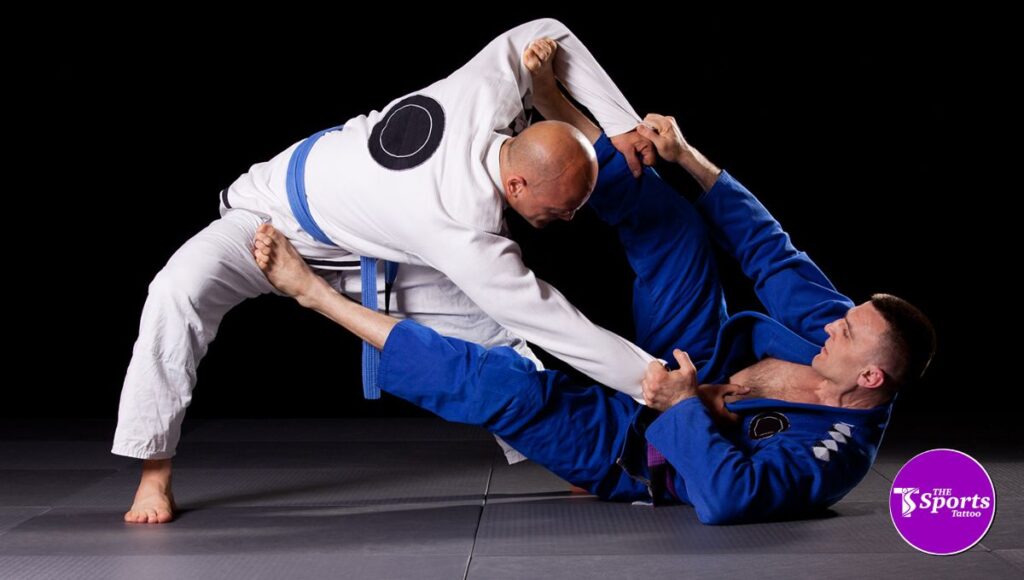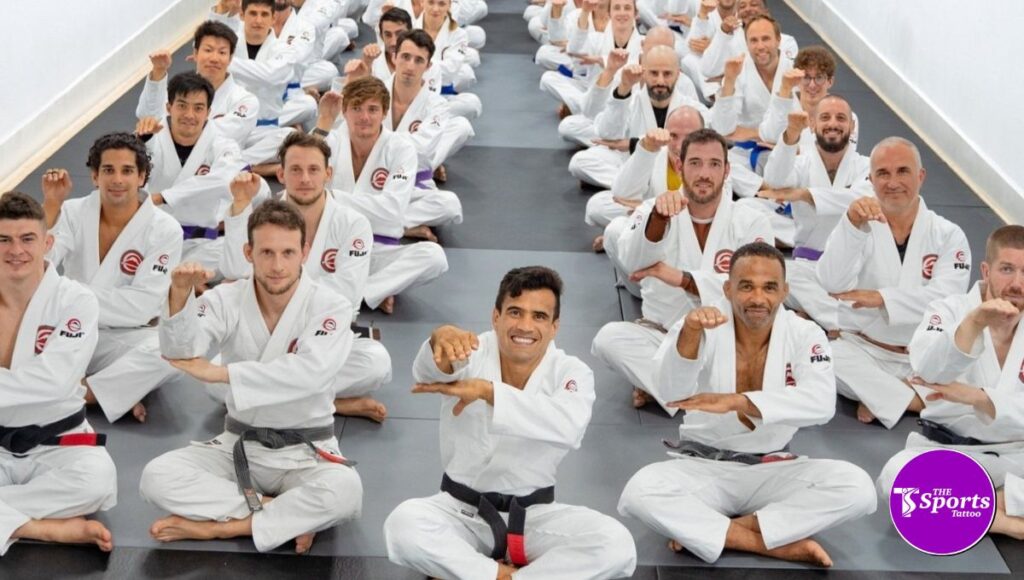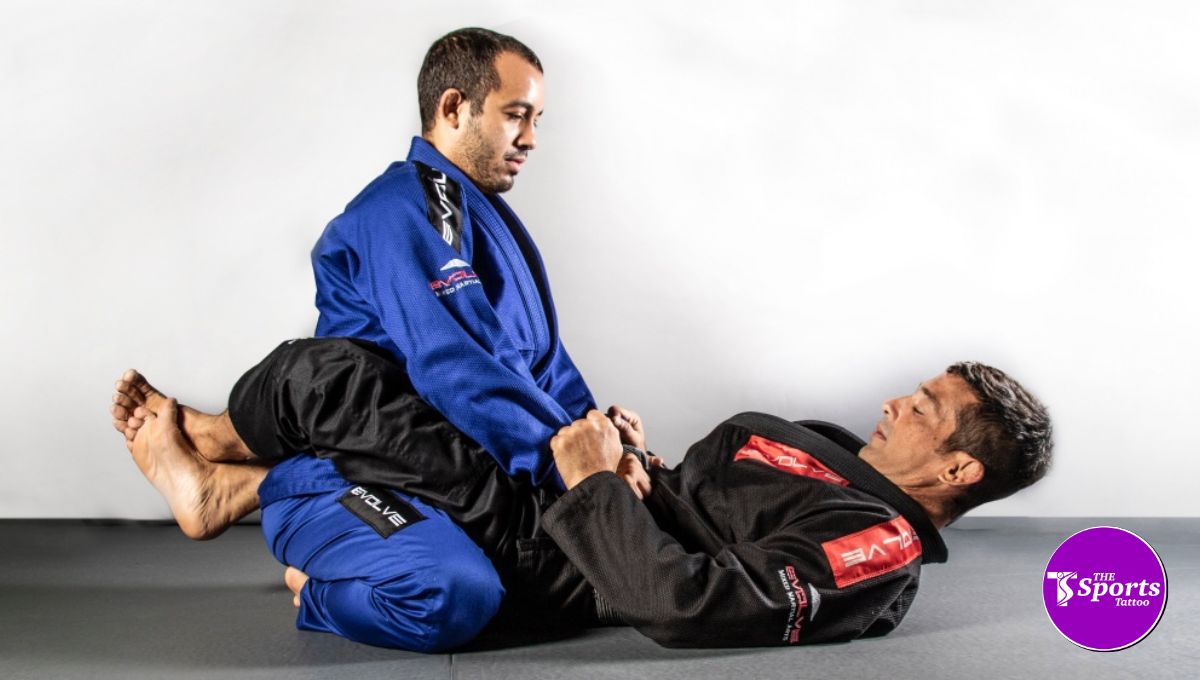Jiu-Jitsu: Brazilian jiu-jitsu was founded in 1925 by Brazilian brothers Carlos, Oswaldo, Gasto Jr., O’Brien, and Hélio Gracie after Carlos was taught jiu-jitsu in 1917 by a traveling Japanese judoka named Mitsuyo Maeda. Later, the Gracie family developed and published Gracie Jiu-Jitsu, their self-defense method. Through the inventions, practices, and adaptation of Gracie jiu-jitsu and Judo, BJJ finally developed its distinct combat sport, becoming an essential martial art for modern MMA.
BJJ is based on the idea that a smaller, weaker individual may successfully defend oneself against a bigger, stronger, heavier opponent by employing leverage and weight distribution, bringing the fight to the ground, and defeating them with various holds and submissions. BJJ training can be helpful for both sport grappling and self-defense. Sparring, sometimes known as “rolling” in the BJJ world, and live drilling are essential for training and development. BJJ can also be utilized to promote physical fitness, character development and as a way of life.
Brazilian Jiu-Jitsu Style of Fighting
Brazilian jiu-jitsu points out ground combat techniques, and submission holds involving joint locks and chokeholds to neutralize potential strength or size advantages. Physical strength can be balanced or increased on the ground through effective grappling techniques.
BJJ utilizes takedown techniques to bring an opponent to the ground, such as “pulling guard,” which aren’t used in other combat sports such as judo or grappling. Once the opponent is on the ground, a variety of techniques (and counter-techniques) are available to manipulate them into a position where a submission technique can be applied. Achieving a dominant position on the ground is one of the defining characteristics of BJJ, which includes effectively using the guard position to defend oneself from the bottom and passing the guard to dominate from the top position with side control, mount, & back mount.
When executed by two skilled practitioners, this system of moving and manipulation resembles a form of kinetic or physical chess. In BJJ, a submission hold is frequently compared to a “checkmate,” where the opponent has no other option but to submit, be injured, or be choked.
Maeda’s theory claimed that physical combat could be divided into distinct phases, such as striking, grappling, ground, etc., as described in the book. Thus, it was the responsibility of a tricky fighter to keep the battle in the combat phase most suited to his strengths. Renzo Gracie stated that this greatly influenced Gracie’s fighting style. These techniques were refined over time by the Gracie family, among others, and became prominent in modern mixed martial arts.

Brazilian Jiu-Jitsu Training Methods
As BJJ points out, submissions, sparring, and live drilling (also known as “rolling”) become the most important aspects of training. This form of training enables practitioners to train at full speed and strength, simulating the effort exerted during a competition. Training methods include drills in which techniques are practiced against non-resisting and resisting partners, isolation sparring (commonly known as positional drilling) in which only one style or set of techniques is used and full sparring in which each practitioner attempts to submit their opponent through strategy. Physical conditioning is another essential part of training.
The Gracie family lineage, descended from Helio Gracie, emphasizes BJJ applications primarily applicable to self-defense. They frequently perform development exercises in which a person is surrounded by a circle of other students who attempt to attack the defending student, who must use techniques to defend themselves.
Primary Ground Positions
- Side control
- Knee on Belly Position
- Full Mount
- Back mount
- North South Position
- Guards
Submissions
The majority of submission holds are classified into two types: joint locks and chokes. Joint locks often include isolating an opponent’s limb and using body position to create a lever that forces the joint to move outside its natural range of motion. Pressure gradually increases and releases if the opponent cannot escape the hold and signals defeat by tapping. If the opponent does not tap when required, a choke hold may reduce the blood supply to the brain and cause unconsciousness.
- Compression Locks
- Joint Locks
- Chokes

Brazilian Jiu-Jitsu Grading
According to the Brazilian jiu-jitsu ranking system, a practitioner is awarded various colored belts to represent increasing technical knowledge and practical ability levels. While the system’s structure shares its origins with the judo ranking system and the sources of all colored belts, it now includes many unique features and concepts. Some differences, such as between youth and adult belts and the stripe/degree system, are relatively minor. Others are distinct and have become synonymous with the art, including a marked informality in promotional criteria, an emphasis on a competitive demonstration of talent, and a generally conservative approach to promotion.
Historically, competitive skill demonstration as a simplified and merit-based promotion route holds. Due to the long intervals between belt ranks, some institutions have introduced a green belt for adults between the white and blue belts. In addition, many children’s programs have adopted a grey belt to indicate advancement between the white and yellow belt ranks.
In contrast to other martial arts such as taekwondo and karate, earning a black belt in Brazilian jiu-jitsu typically takes several years, and the rank is generally regarded as expert level. The time required to achieve the rank of black belt varies based on the practitioner. Some notable individuals with prior experience in other martial arts have been promoted directly to the black belt without passing through intermediate ranks.
However, this practice has fallen out of favor in recent years. Others achieved the title in relatively brief periods. Without exceptions such as these, the average training period is approximately ten years. However, Ryron Gracie (grandson/grandnephew of founders Hélio & Carlos Gracie) has stated that the average of 10–12 years is too long, suggesting that the practitioner’s ego commonly restricts progress and that advancement to black belt should take approximately seven years.




